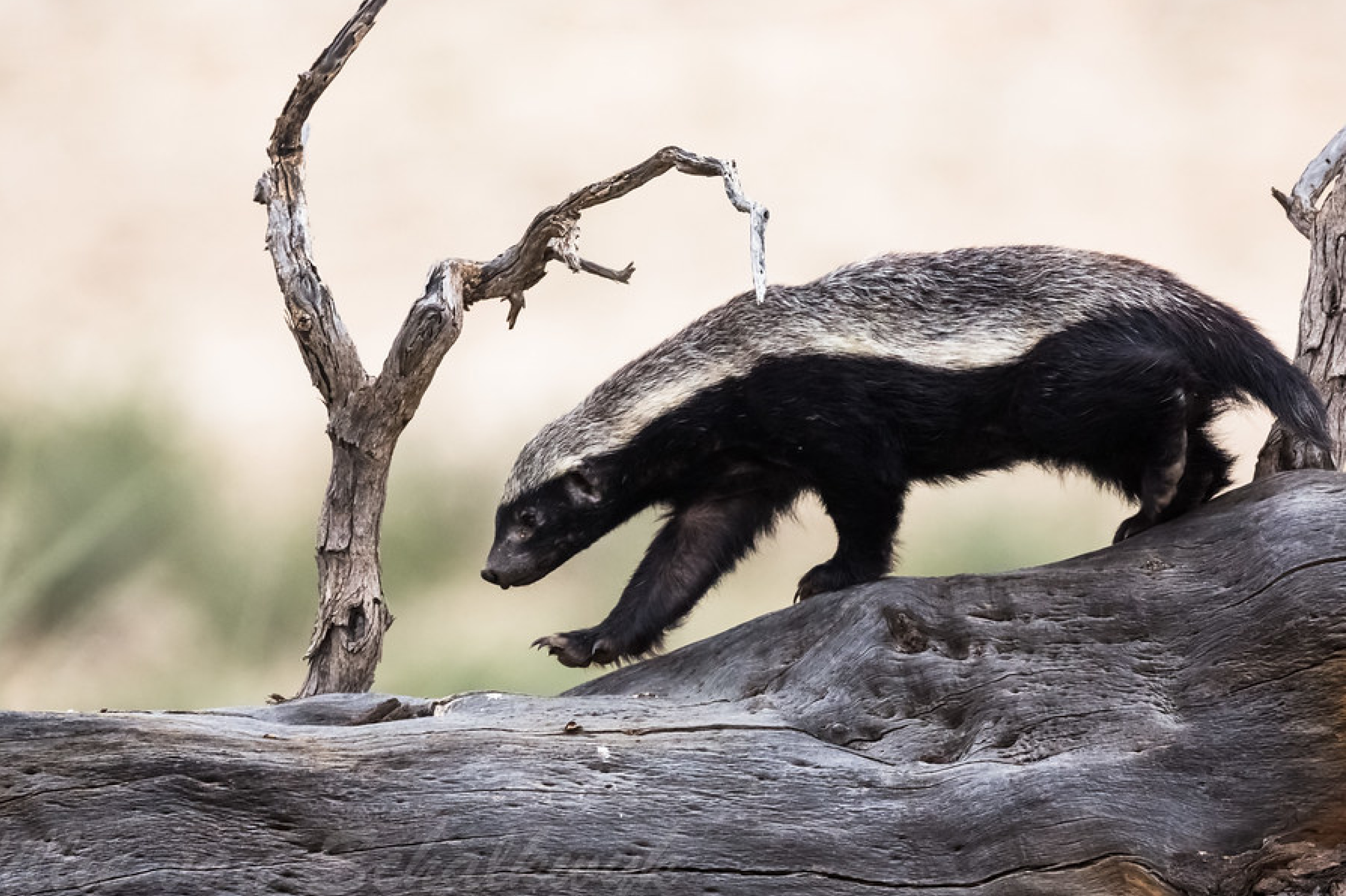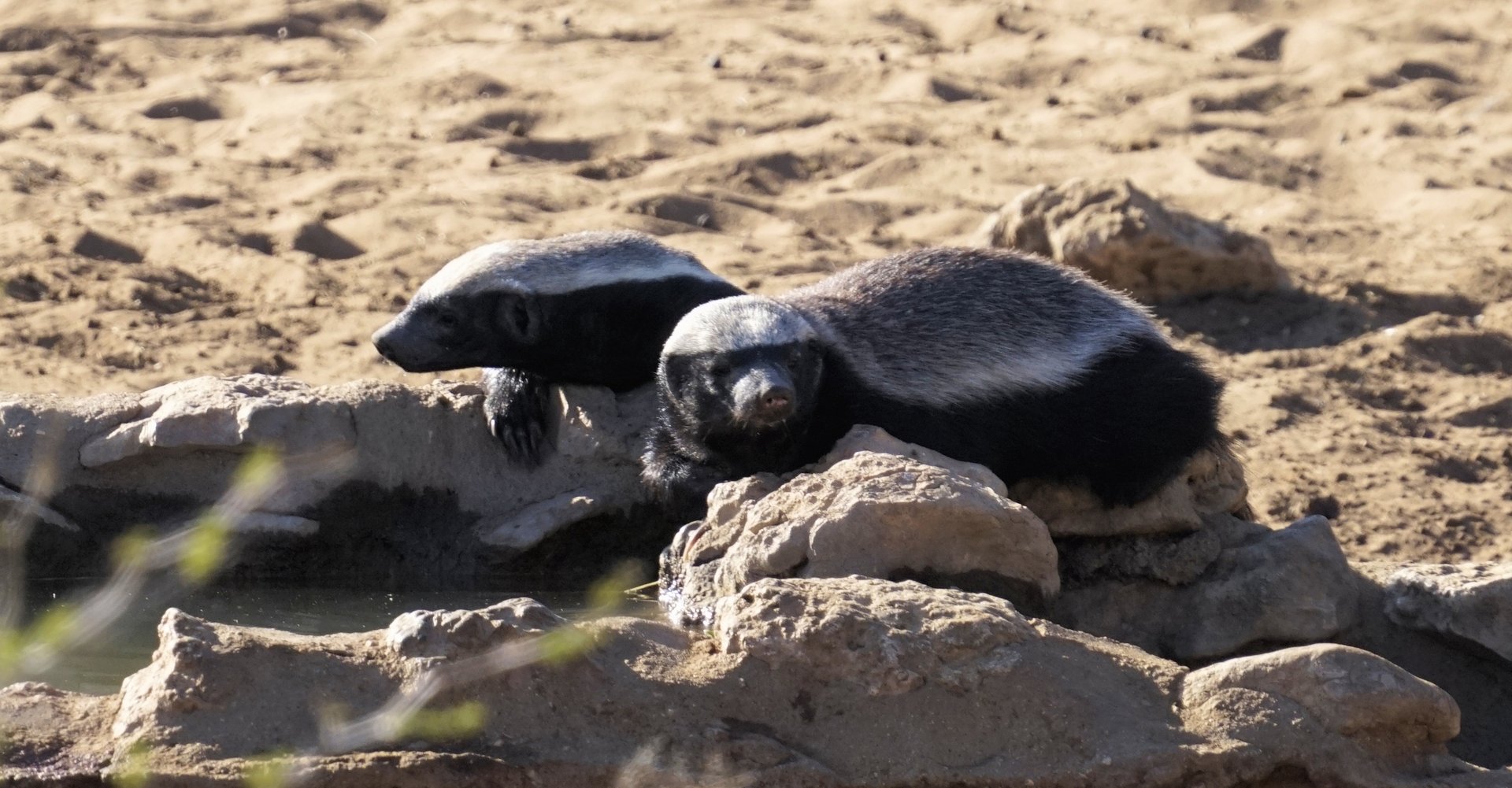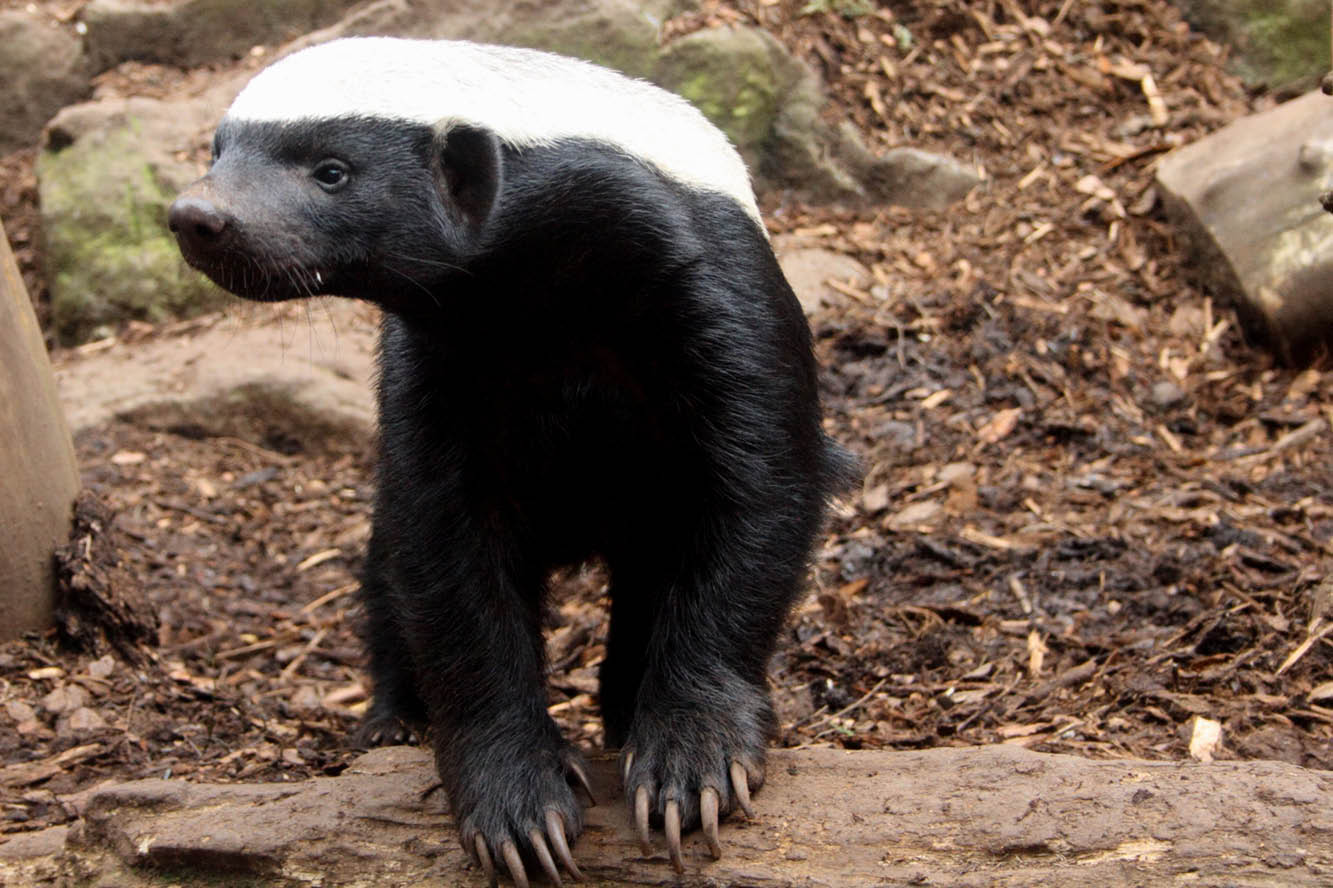The honey badger, also known by its Latin name Mellivora capensis, belongs to the mustelid family and is one of Africa’s most remarkable predators. Although rather small in size, with a shoulder height of around 25 cm and a body length of up to 80 cm, the males being slightly larger than females, it is the honey badger’s boldness and resilience that earn it its legendary reputation. This tenacious little fighter is known for taking on venomous snakes and even challenging apex predators without hesitation.
The honey badger’s appearance is striking and unmistakable: its body is compact and muscular, covered in coarse, dense fur. Most distinctive is the contrasting coloration – the lower body is dark grey to black, while a broad silvery-white stripe runs from its forehead down the back to the base of its tail. This bold pattern acts as a warning to potential enemies: "Don’t mess with me."

Mellivora capensis
Small, Tough and Fearless
For the sake of its favourite food – honey – this fearless creature is willing to take great risks. Protected by incredibly thick skin, it dares to raid well-defended beehives and shrugs off the stings of thousands of angry bees. But the skin is not only thick – it’s also extremely loose, especially around the neck. This gives the honey badger a vital advantage in combat: even when seized, it can twist and bite back with surprising agility.
Bush Original
Nocturnal OMNIVORE WITH A WARRIOR’S HEART
The honey badger is a true all-rounder, found even in the dry regions of central Namibia – from Halali in Etosha National Park to private wildlife reserves like our own Kambaku Wildlife Reserve. Highly adaptable, it thrives in savannahs, thornbush landscapes, and arid environments alike.
Honey badgers are omnivores with a remarkable sense of smell, which they use to track down underground prey such as larvae, scorpions or snakes. Though they have a clear fondness for honey, they also eat small mammals, lizards, fruits, insects, and carrion. With their strong forelimbs and long, curved claws, they are excellent diggers – able to break into burrows, dismantle bark, or dig up roots and nests with ease.
Despite their relatively small size (10–15 kg), honey badgers are infamous for their toughness. Their dense, loose skin, powerful jaws and strong claws make them formidable opponents. They not only face off against swarms of bees – they also stand their ground against leopards and hyenas. One of their most remarkable traits is their high resistance to venom: honey badgers often hunt and kill venomous snakes like puff adders and cobras. Even if bitten, they typically recover within hours and resume their activity – a biological feat few predators can match.
But what makes the honey badger particularly captivating is its intelligence. These animals are known for their problem-solving abilities and even tool use. In captivity, individuals have been observed using sticks or stones to reach food – a skill usually associated with primates or certain bird species.
Sightings of these small warriors are unfortunately quite rare. Honey badgers prefer to hunt and roam during twilight and nighttime hours.



